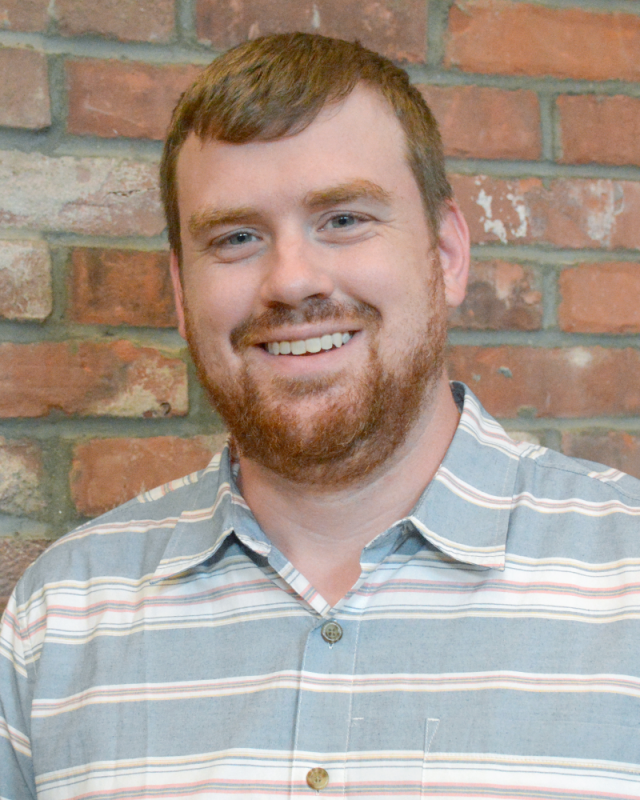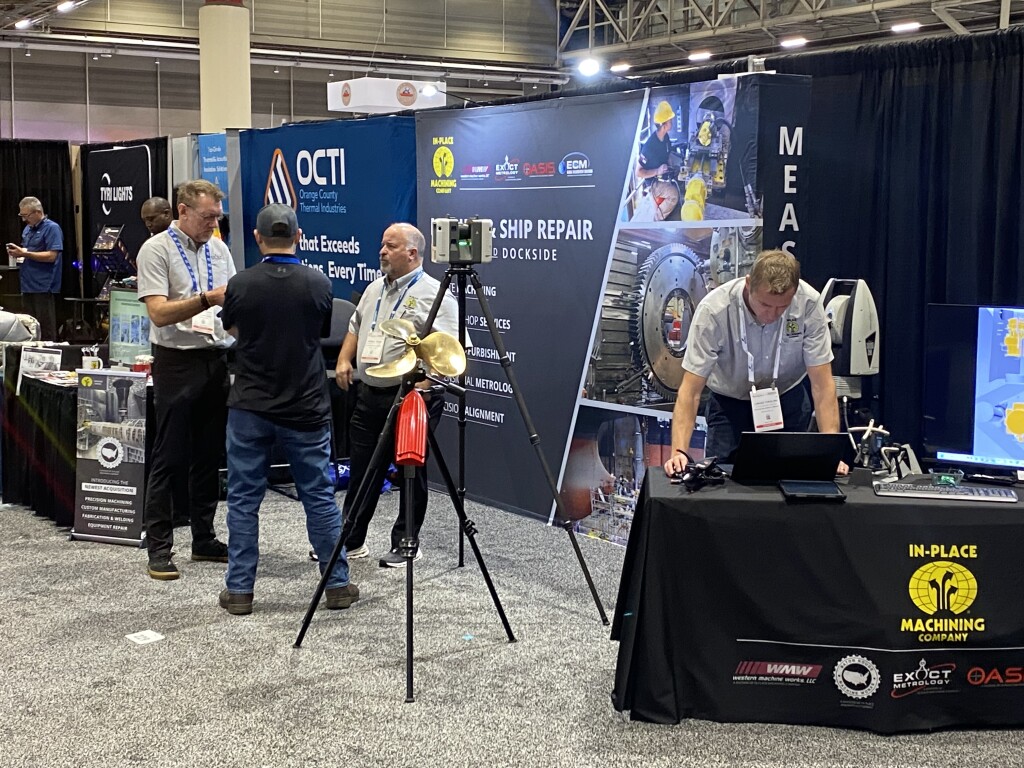The use of 3D laser scanning has been commonplace in industries like engineering, surveying, and construction for years, but as the technology has become cheaper and easier to use, other sectors are taking advantage of the capabilities. On the exhibit floor at the 2024 International WorkBoat Show, there are a handful of companies who are utilizing these tools for the commercial industry, scanning everything from individual components to entire ships. In-Place Machining Co. was one of the organizations talking about this technology at this year’s event, with their Leica RTC tripod laser scanner (pictured above) at their booth.
These scanners are best utilized in the commercial marine industry to get accurate measurements of components and provide precise as-built conditions for maintenance and retrofitting purposes. The systems send out hundreds of thousands — even up to millions — of light pulses per second, with those pulses going out into the environment and bouncing back to the scanner after hitting an object. With these millions of points, and after some post-processing work, the end user gets a 3D model, called a point cloud that shows the real-world conditions with, in the case of a tripod scanner like the RTC, millimeter accuracy.
WorkBoat.com spoke with Michael Trudeau about this technology’s usage in the commercial marine industry on the exhibit floor. Trudeau is a product manager with Exact Metrology, who is a partner with In-Place Machining Co., and in addition to working with the commercial marine sector they also work with the energy and aerospace industries.
While Trudeau noted that the use cases he sees in the commercial marine sector run the gamut and vary depending on the specific industry these companies are in, he did provide a few more specific examples. One might want to improve on their existing propeller, for instance, but they don’t have access to the legacy CAD data. They need to ensure that they have accurate specs for the asset, so a service provider can scan the asset and provide that accurate point cloud data to then form the basis for the engineers’ work.
On a larger scale, he gave the example of a Navy ship that could need an overhaul of their ship. For that work to go smoothly, they need to know the current conditions down to a high accuracy, exactly what is being provided by these scanners. A service provider can go around both the outside of the ship as well as the internal, collecting scans with the tripod scanner to get that accurate as-is data to provide precise information for the overhaul.
The data from these scans are generally sent over within a day of the scan for post-processing work, minimizing the amount of lead time necessary for these projects that utilize the point clouds to get underway. Even when the scanning portion of a project may take multiple days to complete, Trudeau said that each day’s scans are sent out overnight so the post-processing work can be done in something close to lockstep with the scanning.
Looking forward, Trudeau said that his team is working on bringing digital twinning to the commercial marine industry. In this case, he is talking about a sophisticated idea of “digital twin” in which a digital replica based on the point cloud data collected with these scanners forms the basis of a real-time data system. Essentially, these digital twins will take in real-time data from Internet of Things (IoT) sensors to give up-to-date information about the systems of a ship or shipyard. This technology is currently being utilized by industries like facility management and infrastructure, and Trudeau says his team is looking for a company in the commercial marine sector with whom they can bring this work to the industry.





